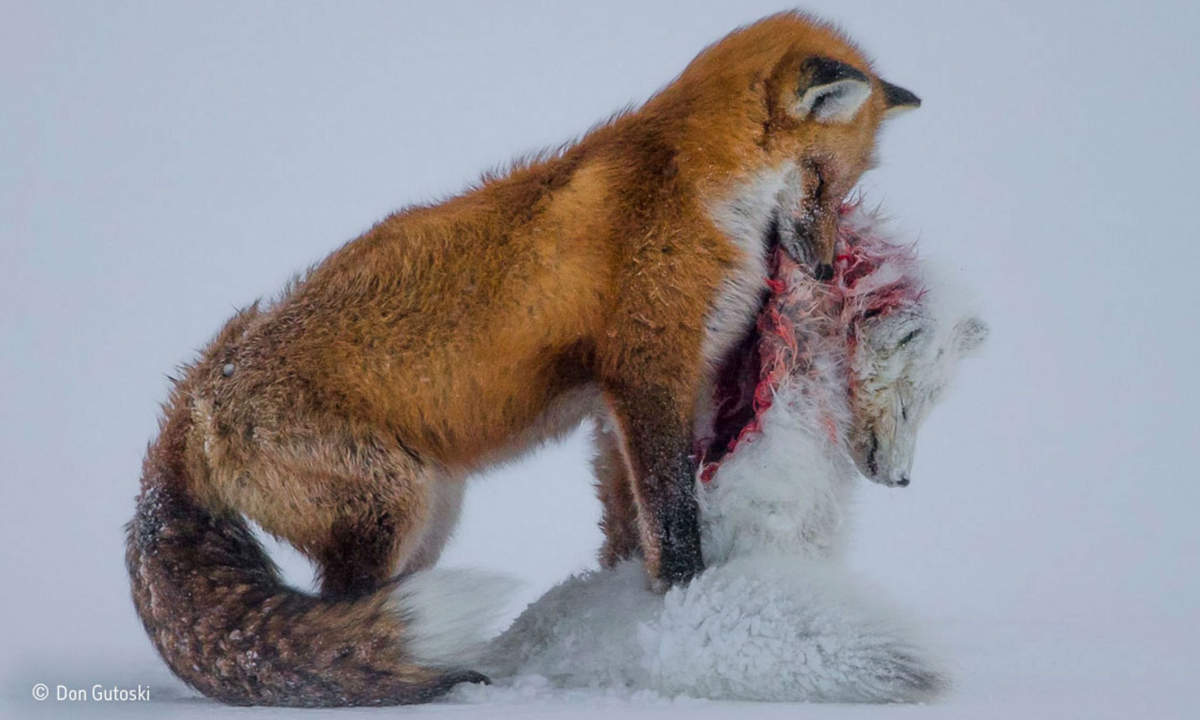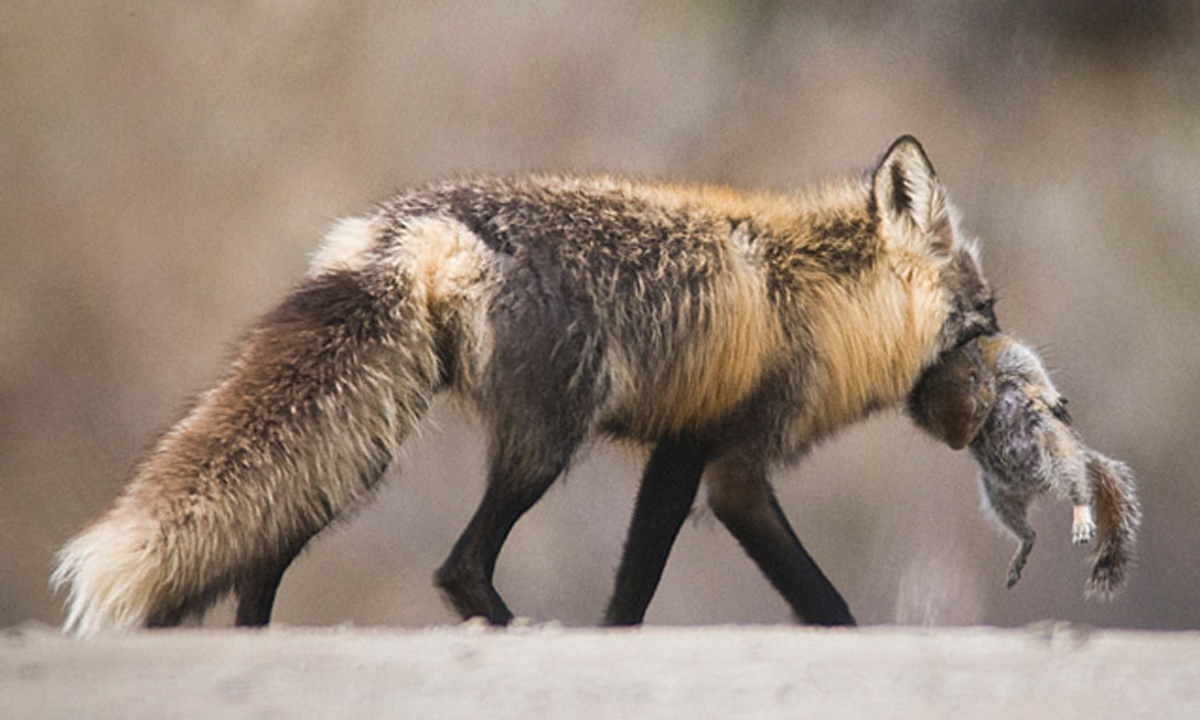
As our planet gets warmer, more species are being brought closer together than ever as climate bands shift polewards and key resources move along with them. When the species are closely related, the increased interaction can result in cross-breeding—as is the case between polar bears and grizzlies. But the opposite response can also be true.
Across northern Eurasia and North America, where the taiga forests abut the tundra, red foxes have been expanding their range northward for the last two decades or more, encroaching on territory that until recently, belonged solely to their cousins, the Arctic foxes. The resulting species collision has been intense and antagonistic, with one side competing with and supplanting the other—often through violent means.
When red foxes and Arctic foxes go paw to paw, it’s often the more aggressive, more territorial red foxes that win. In 2015, photographer Don Gutoski’s award-winning photo showing a red fox dragging around a fresh Arctic fox carcass put the conflict in the spotlight, but research confirms that red foxes have been killing and eating their smaller, paler relatives for a while now.
For example, scientists in Sweden documented repeated instances of adult red foxes seeking out and preying upon Arctic fox cubs that were denning near red fox reproduction sites. Red foxes have also been observed attacking adult Arctic foxes in Alaska on numerous occasions.
While interactions can get violent, it’s likely that the more impactful consequences of the red-Arctic fox conflict stem from red foxes taking over the dens of Arctic foxes, and even pushing them out of entire parts of their normal geographic range.
Several years ago, scientists observed a red fox lay claim to an occupied Arctic fox den in Russia’s Yamal Peninsula, bullying the rightful owner away permanently. In more extreme cases, red foxes can wipe out Arctic foxes almost entirely, as they did on the St. Matthew Islands off the coast of Alaska. The new red fox population presumably got to the islands by crossing the surrounding sea ice in the winter.
Enter: another invader
While the invasion of red foxes into polar latitudes is driven, in part, by local climatic conditions becoming more tolerable for red foxes, in a strange twist, much of their increased presence in Arctic fox lands may be assisted by another southern invader—humans.
As the Arctic becomes more accessible to human habitation and industry due to the changing climate, humans are inadvertently changing these ecosystems to be inherently more suitable for red foxes. For example, oil-extraction infrastructure on the tundra creates pockets of shelter for the less cold-adapted red foxes, allowing them to persist north of where they normally couldn’t.

Another one of these “anthropogenic subsidies” comes from livestock like reindeer; when individuals die, they provide a source of carrion that helps sustain red fox populations (this is particularly true in regions that have lost their native wolves, meaning there’s less competition).
These human-generated safe spaces may allow red foxes to impact far northern Arctic fox populations long before even climate change catches up.
While conflict between the two species is likely to become more frequent as the climate warms, there are still some places where (for now) Arctic foxes are doing alright. An example is Iceland, which has seen a miraculous recovery in its population of Arctic foxes in recent years — though, notably, red foxes are not found in the island nation. If a population were to establish there, then all bets may be off.




